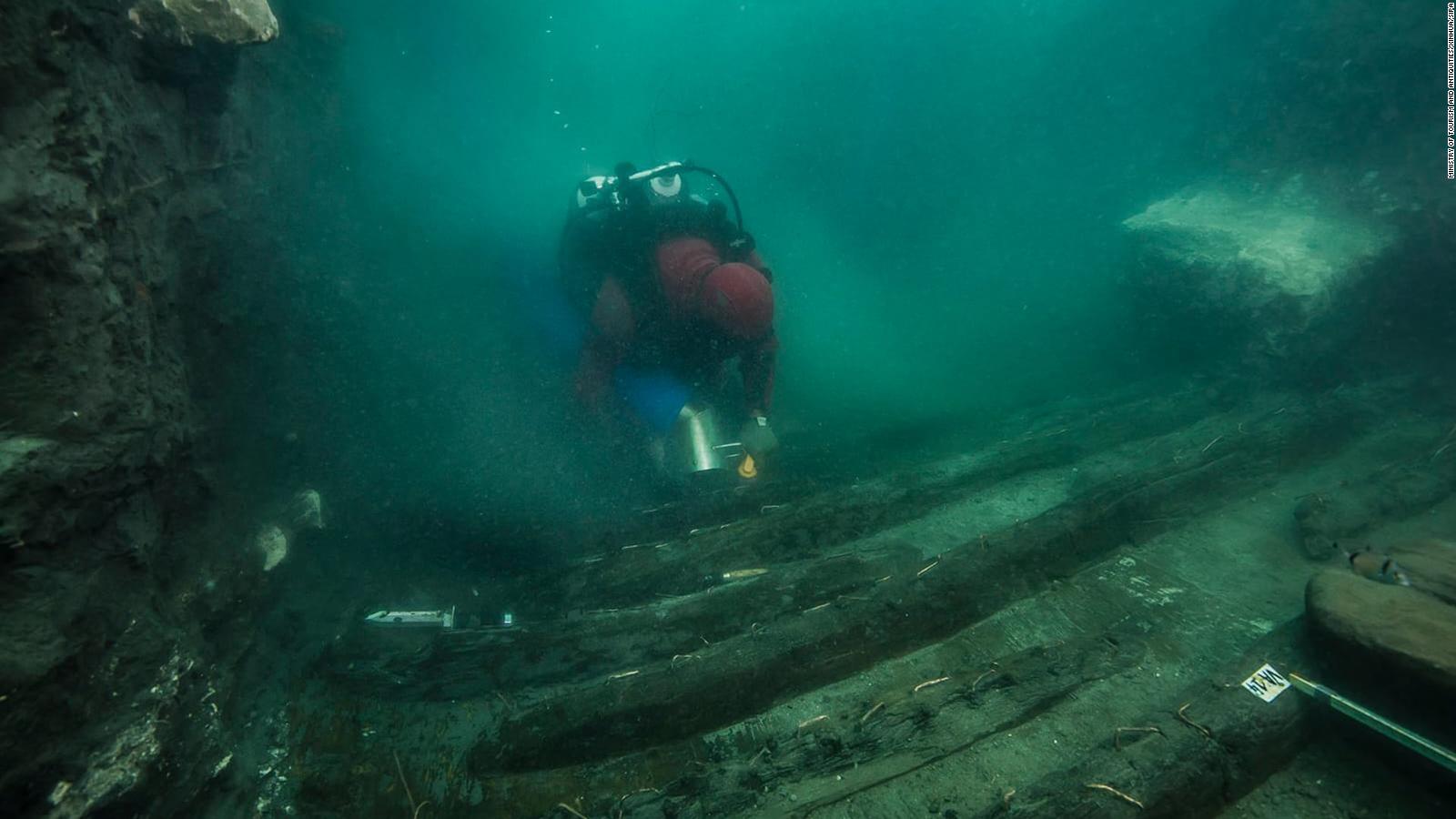Divers have found rare remains of a warship in the ancient sunken city of Tony Heraklion – once Egypt’s largest port on the Mediterranean – and a burial complex illustrating the presence of Greek merchants.
The city that controlled the entrance to Egypt at the mouth of the western arm of the Nile dominated the area for centuries before the founding of Alexandria near Alexander the Great in 331 BC.
Destroyed and sunk along with much of the Nile Delta as a result of several earthquakes and tidal waves, Thônis-Heracleion was reopened in 2001 in Abu Kir Bay near Alexandria, now Egypt’s second largest city.
A warship discovered by an Egyptian-French mission led by the European Institute of Underwater Archeology (IEASM) sank when the famous Temple of Amun collapsed in the second century BC and was moored next to it.
Preliminary research shows that the hull of a 25-meter flat-bottomed ship with oars and a large sail was built in the classical tradition, and also has the features of an ancient Egyptian building, according to the Ministry of Tourism and Antiquities of Egypt.
In another part of the city, the mission found the remains of a large Greek burial area dating back to the first years of the 4th century BC, the report said.
“This discovery perfectly illustrates the presence of Greek merchants who lived in this city,” the ministry said, adding that Greeks were allowed to settle here during the late dynasties of the pharaohs.
“They built their own shrines near the huge temple of Amun. They were destroyed at the same time, and their remains are mixed with the remains of an Egyptian temple.

